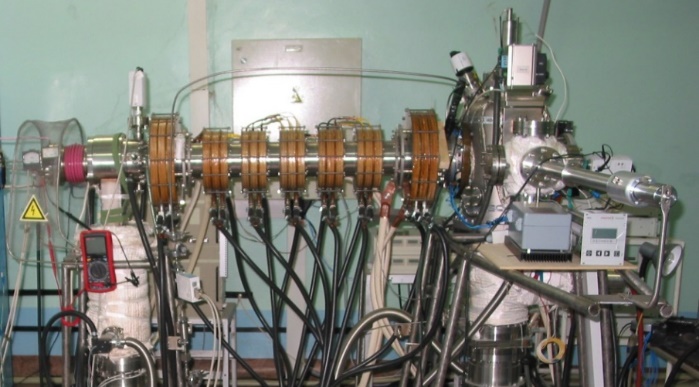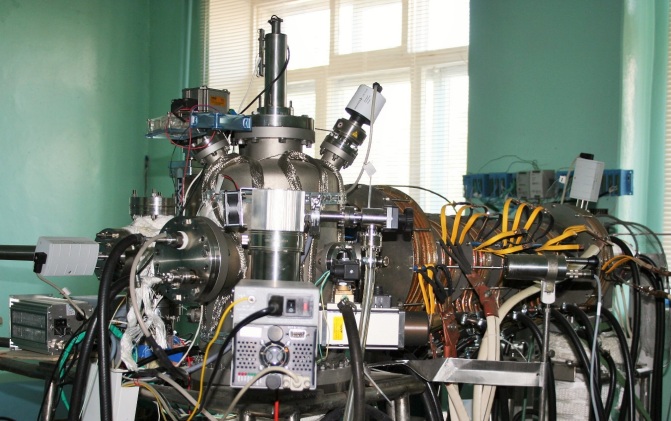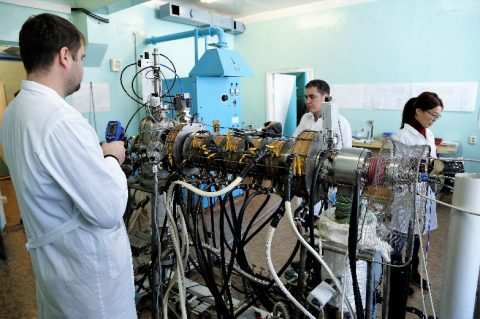SIMULATION TEST-BENCH WITH PLASMA-BEAM INSTALLATION
The simulation test-bench with a plasma-beam installation is intended for testing structural materials of thermonuclear technology under conditions of plasma exposure and high thermal load. The diagnostic equipment of the test-bench allows studying the plasma-surface interaction and plasma physics.
Technical specification:
Electron source power …………………………………………….. 0 – 30 kW
Electronic temperature …………………………………………… 0 – 15 eV
Electron energy ……………………………………………………….. 0 – 20 keV
Electron beam diameter …………………………………………. 3 – 30 mm
Maximum gas pressure……………………………………………. <10-3 torr
Plasma ion energy …………………………………………………… 0 – 2 keV
Ion flux density ………………………………………………………… 1022 m-2·s-1
Maximum plasma concentration,
H2, D2 m-3 …………………………………………………………………. ~1·1018
He, N2, Ar, O2 m-3 ……………………………………………………… ~1·1018
The imitation test-bench has the following distinctive functionalities:
– electron beam scanning system, which allows to distribute the heat flux of electrons over the area of the cooled collector of the target assembly;
– several target vacuum devices with the ability to cool and control the temperature of the sample from the irradiated and back sides of the surface;
– system for programmed heating of the test materials for experimental work on thermal desorption in situ analysis.
The imitation test-bench with plasma-beam installation is capable to use hydrogen, deuterium, helium, argon, nitrogen, oxygen, air and a mixture of gases as working gases.
Main research area:
– study changing the structure and properties of structural materials of thermonuclear facilities under plasma irradiation and thermal exposure;
– modification of the material surface layer in order to improve performance;
– testing of diagnostic equipment for thermonuclear facilities under plasma exposure and heat load in various gaseous mediums;
– investigation of the interaction between low-temperature plasma and materials of the TNR divertor cladding and the first wall of the KTM Tokamak and TNR;
– obtaining protective coatings on the surface of TNR structural materials;
– improvement of methods and tools for diagnostics of low-temperature plasma.
- Conducting an experiment on plasma irradiation of a structural material
- Plasma-beam discharge



